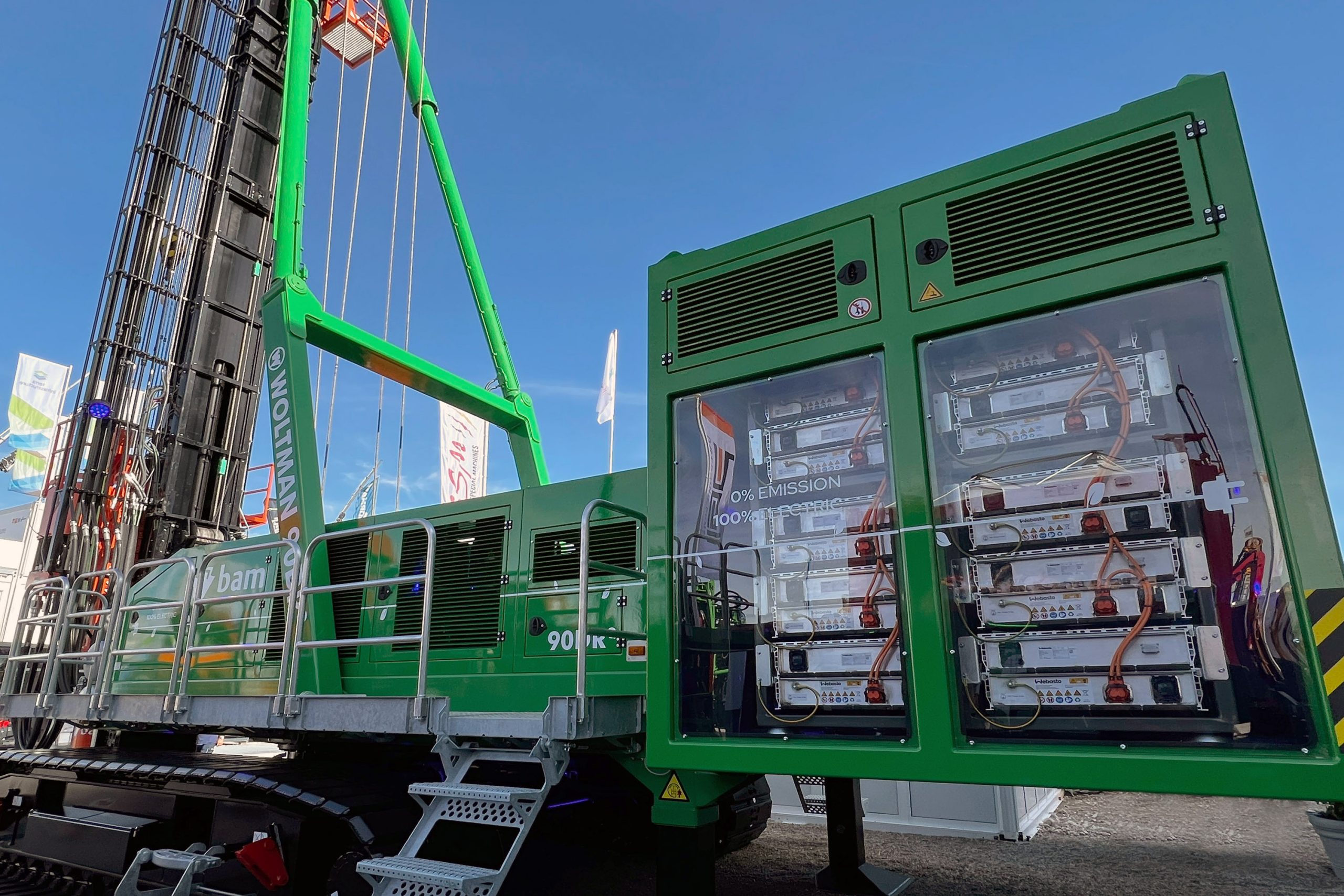 Webasto und Dieseko elektrifizieren den 90 Tonnen schweren Riesenbohrer Woltmann 90DRe. Foto: Dieseko
Webasto und Dieseko elektrifizieren den 90 Tonnen schweren Riesenbohrer Woltmann 90DRe. Foto: Dieseko
Webasto, together with Danfoss Editron, has electrified a giant drill from Dutch manufacturer Dieseko for the first time. The Woltman 90DRe weighs 90 tons and can drive piles up to 36 meters long into the ground by drilling or driving.
Giant drills are in use on major construction sites around the world. Until now, they have been powered by diesel – both for moving around the construction site and for the various tools with which the machines work. But the desire to electrify construction machinery is not stopping at these heavyweights. Some countries, such as the Netherlands, Norway, and the US state of California, are calling for zero-emission construction sites as early as 2025 and 2030, respectively, with nitrogen and carbon dioxide emissions in particular to be reduced quickly and extensively. For this reason, Webasto has already implemented solutions for the electrification of various construction machines, and now also for a pile driver.
The idea: Dividing the battery packs into two parts
The Woltman 90DRe uses 36 standard battery packs from Webasto. Six of them are permanently installed on the machine and supply the power for a small drive motor that allows the machine to travel short distances on the construction site. The other 30 battery packs provide immense power for drilling or pile driving. These battery packs are removable and can thus be transported separately. This facilitates machine transport from one construction site to the next and allows empty batteries to be exchanged for charged ones. At almost fifteen tons, they provide the necessary counterweight to the tools.
Central battery management system: Vehicle Interface Boxes” (VIB).
The number of batteries is designed to provide enough power for an average workday on the construction site of about eight to ten hours. Overnight, they can be charged with up to 90 kilowatt hours for use the next day. They have an energy content of 35 kilowatt hours each – in total, they provide 1.2 megawatts of power when fully charged. “Often, our machines are the first to arrive on a job site and start working. The challenge then is to have enough grid power available at the site to charge overnight. Currently, there is not enough power at every construction site. But we think the availability of grid power will improve with the introduction of these types of electric machines,” explains Dirk Smulders, managing director of Dieseko.
Webasto’s batteries are robust (shake and shock tested to 100 kilonewtons) and protected by an extra box. A central battery management system in the form of so-called “Vehicle Interface Boxes” (VIB) controls them centrally. The Webasto VIBs also serve as an interface for communication between the battery system and the vehicle. In addition, they can be cooled in the system, which guarantees performance even in hot environments and under continuous load.
Holistic thermal management
To ensure that the batteries always operate in their optimum operating temperature range between 10 and 30 degrees Celsius, Dieseko opted for Webasto’s plug & play thermal management system. In addition, an individual application of the modular platform “eCabin” was installed for electrical air conditioning of the driver’s cab. This includes a high-voltage compressor for cooling, a HVH 100 high-voltage heater, and intelligent control via the Cronus control unit. “Our battery thermal management solution ensures the best possible energy conservation on a day-to-day basis and battery pack longevity. In addition, the eCabin heats and air-conditions the cab. This means we solve all the thermal tasks at once,” explains Lena Beckmann, Director Product Management Battery and Thermo Management at Webasto.
Electric construction machines are the future
The E-versions of the drills are initially more cost-intensive to purchase, but calculated over the years of use, they are nevertheless financially interesting. “For one thing, diesel will become even more expensive, and for another, there are tenders that you can already only win if you score points with equipment that produces no emissions on site,” says Smulders. Another advantage of electric propulsion is that the engine only consumes energy when it is being used. Diesel engines run through most of the day, even if they are only in “standby.” The Woltman rig in the 90-ton weight class is the first deep drill that Dieseko and Webasto have electrified. Solutions for other machines are already being planned.
<Published in the current issue of eMove360° magazine in german language. Order free download PDF or print version in the store.>